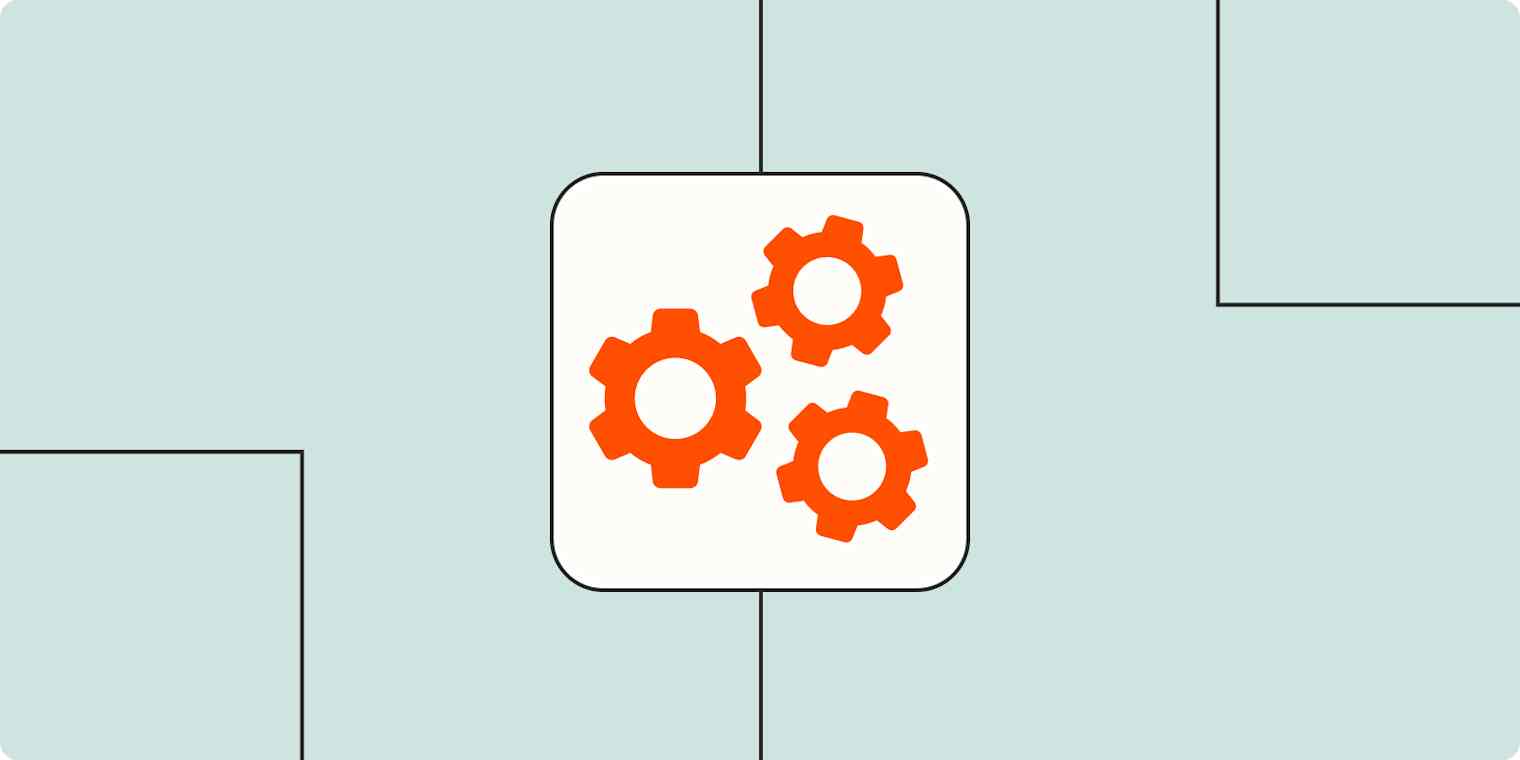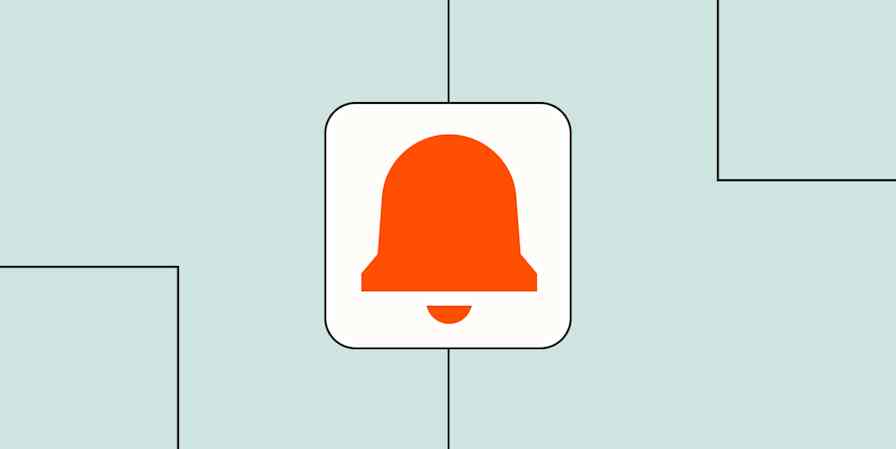When I first joined Zapier in 2020, I led the Marketing Operations team. In 2021, we added Customer Success Operations, followed by Sales Operations in 2022. Each operations team was embedded within the function we supported, and it worked great—until it didn't.
As our Sales and Customer Success teams grew, we realized that this kind of decentralized ops wasn't working. While the structure helped us stay closely connected to the goals and objectives of our respective teams, we were finding it difficult to stay in sync and maintain a unified customer experience across Marketing, Sales, and Customer Success.
That's when we made the decision to centralize our operations into a singular Revenue Operations (RevOps) team.
What is revenue operations?
Revenue operations is a unified operations team that supports an entire go-to-market (GTM) team, usually including Sales, Customer Success, and Marketing. Instead of having an operations team within each of those departments, RevOps is broken down into teams based on specialties, like analytics or technology.
Revenue operations team structure
Here's a simple visual of our team structure to give you an idea of what a revenue operations org chart might look like.

You can see that under RevOps, there are teams broken down by specialty, not by department. Our Tools & Tech team, for example, helps with tools and technology across the GTM org.
Who should use a RevOps framework?
Not every business should use a centralized RevOps model. In our case, we knew it was the right move because we were struggling to maintain consistent customer relationships across our go-to-market efforts. We also noticed friction internally when it came to handoff points between Sales, Marketing, and Customer Success.
Here are a few reasons you might choose the RevOps approach.
You have a subscription- or usage-based revenue model
In product-led growth (PLG) organizations or usage-based business models, the customer journey isn't always linear, so it can be challenging to provide relevant experiences and standardized conversion metrics across all touchpoints. Centralized systems and operations can make it easier to manage this complexity.
For example, our RevOps Planning and Analytics team provides analysis across the entire go-to-market model. This perspective allows them to pinpoint areas of opportunity across both acquisition and expansion—to ensure that leaders can weigh investments on things ranging from lead performance to sales rep performance.
You want to drive more collaboration, knowledge-sharing, and growth opportunities for your ops professionals
Operations professionals have a wide range of specializations—analytics, technology, automation, the list goes on. Having them in one function allows you to utilize the best of all those specializations to build a high-performing team. A RevOps structure fosters more opportunities to learn from each other and collaborate on solutions.
On our team, for example, we often pair on problem-solving because some of us have more business context while others have more technical experience building Zaps and other workflows. This gives us exposure to different specializations in RevOps and helps us all learn new ways of doing things.
You need better alignment across sales and marketing
Centralized RevOps teams have a unique view across all of go-to-market, allowing them to easily spot gaps and misalignment. RevOps teams can drive and operationalize feedback loops where necessary.
For example, each week, our RevOps team does a walkthrough of the top high-value, closed-won deals for our colleagues in Product and Marketing. This provides a more detailed glimpse into the customer journey by sharing how the customer came to us and how they engaged with Sales.
We also created a "ride-along" process (powered by Zaps), where any Zapier teammate can listen in on Sales calls to get a deeper understanding of customer needs.
You have a growing number of third-party tools and some serve duplicate functions
Sometimes IT plays this role, but there are a lot of benefits of having a RevOps team own go-to-market tools. RevOps has a deep understanding of sales, marketing, and customer success strategies, and can make sure tools are utilized effectively across all functions.
At Zapier, we've added more standardization across all of the tools we manage—around things like field creation, user management, and custom object setup in our CRM, HubSpot. This helps us more easily edit and add new Zaps, too, while preventing us from having a single owner for every automation we create—which helps a lot with the next point.
You worry that you have single points of failure
When someone is out of office or leaves your org, RevOps makes it easier to have another ops member jump in to help. We like to encourage each other to take time off, so this is a huge plus.
Who shouldn't use a centralized RevOps model?
RevOps works for us at Zapier, but that doesn't mean it's the right choice for everyone. Here are a few examples of when you might want to stick with decentralized operations teams.
Your Sales, Marketing, and Customer Success teams are fairly mature. If you're not building many new processes or changing existing rules of engagement, the decentralized model can work well. For established teams with fewer dependencies, it ends up being useful to have an embedded ops person who can execute quickly.
You want your ops team to be a collaborative partner. If this is the case, it's important that your ops team deeply understand marketing, sales, or customer success goals. If alignment with stakeholders is more important for you right now than alignment across operations, then it makes sense to stay decentralized.
You have strong technical partners on teams like business operations, data, and engineering. Many companies have internal partners who play a direct role in maintaining an overarching view of the Marketing and Sales teams' tech stacks. For example, you might have a central Business Operations team who manages your CRM. Or maybe your Sales Operations team is primarily focused on analysis, and you have a strong relationship with the company Data Science team.
You have multiple business units that require niche operations experts. In some cases, having ops folks who are deeply embedded within each function can be hugely helpful due to the unique nature of those lines of business. For example, maybe you have two different products that are meant for two different audiences. Marketing and sales motions can differ a lot based on the revenue model, and some operations experts specialize in things like account-based marketing or outbound sales.
Your decentralized model is working. If your current setup is working well, don't force a change. Moving to a Revenue Operations model can be costly and cumbersome. Consolidating tools, changing the way you utilize customer data, and redesigning processes is a heavy lift (been there, literally just done that). Make sure it's worth the investment.
RevOps best practices: How to make your move to RevOps successful
If you've decided to make the investment in RevOps, you need to be intentional. Here are some key RevOps best practices to help you make the most of your fancy new team.

1. Carefully design your RevOps team structure
There are several ways to design a revenue operations org chart. Think through the business needs you have. For example: is your tech stack complex, requiring people dedicated to maintaining it? (At Zapier, that's a resounding yes.)
As you can see in the image from the top of the article, our RevOps function at Zapier is made up of four teams:
Operations
Tools and Technology
Planning and Analytics
Enablement
Your needs might be different, and you shouldn't rush this decision. You're already making one massive organizational change, so you want to make sure you get it right.
2. Stay tied to the goals of your GTM stakeholders
While a formal request process is important, becoming a team of purely ticket-takers limits the ability for RevOps to drive cross-functional alignment. Be intentional about how you'll engage and interact with the teams you support.
Here are some examples of how we do that at Zapier:
Our Operations team serves as the main interface with Marketing, Sales, and Customer Success business leaders. They provide both strategic and tactical support to those teams and keep others in RevOps informed as needed.
Our Analytics and Planning team partners with GTM leadership and our Finance team to ensure we're making informed business decisions.
Our Tools and Technology team represents go-to-market needs to IT, Engineering, and Data teams.
3. Position RevOps in your org
Transitioning to RevOps can be painful as internal teams learn how and when to engage with you. To speed up the transition, be direct, and share content on how to work with you. Also remember to regularly share progress on big projects to provide important context to the rest of the org.
4. Create a single RevOps roadmap
Having one RevOps playbook helps drive visibility across GTM and specifically across the RevOps function. It's a place you can point people, so they know what your priorities are—and why. It also helps your RevOps team collaborate and support each other where internal dependencies exist.
5. Automate wherever you can
Our RevOps team uses automation to stay in sync, achieve results, and identify opportunities. Zapier lets us connect all the tools in our tech stack (and the tools our stakeholder teams use, too) to automate our way to improved systems and better cross-functional work.
Some are simple, like this Zap that sends us a reminder in Slack every week to keep each other informed about must-do tasks (we call it our "Weekly Priority Zap").
Other workflows are more complex. Our "Changelog Zap," for example, keeps track of any changes in our CRM system: we post changes in a Slack channel, and it automatically updates our changelog documents for easy searchability. Depending on the status of a change, the Zap will produce different results (those are the Paths in the image below).

And that's just the tip of the iceberg.
We also use Zaps to alert us when data issues arise—things like special characters in form submissions, mismatched fields, or potential overages in our marketing automation platform. A 10-step Zap with two Paths powers that system.
We have a 15-step Zap that connects our detailed, long-term roadmap to Asana, our project management tool for day-to-day execution.
A 17-step Zap with five Paths powers our RevOps request process: the requester and our team are both kept in the loop, and it connects Typeform, Slack, Asana, and HubSpot.
Zapier is the most connected AI orchestration platform—integrating with thousands of apps from partners like Google, Salesforce, and Microsoft. Use interfaces, data tables, and logic to build secure, automated, AI-powered systems for your business-critical workflows across your organization's technology stack. Learn more.
6. Make sure you have the right talent
RevOps isn't an excuse to have one Marketing Operations person running ops for Sales and Customer Success too. While it allows you the flexibility to swarm problems and change priorities more easily, centralizing to RevOps isn't a solution to minimize headcount. To make it work, it's important to have the breadth and depth of skills on the team across several specializations.
7. Empower GTM teams
Over-centralizing operations can lead to slower execution and an over-reliance on RevOps for execution. The result? RevOps becomes a bottleneck.
A great operations team is built on systems that run themselves. This means strong enablement for other teams, so GTM leaders can interpret results and execute programs easily without us.
Making RevOps work for your organization
In the wrong environment and without intention, a centralized RevOps team can lead to too much oversight, slower execution, and bottlenecks. But if you can mitigate those risks with a thoughtful approach, RevOps can become the true heartbeat of your GTM organization, unlocking opportunities for better alignment across your org and simplifying processes for managing customer relationships.
Related articles:









